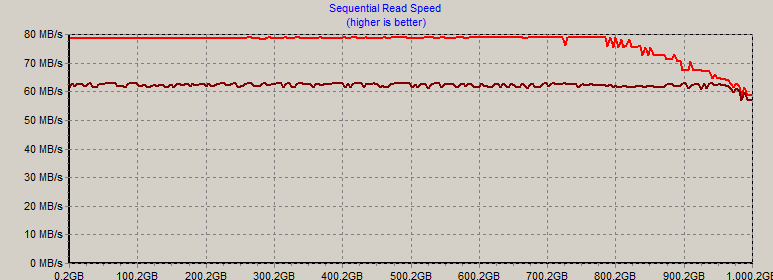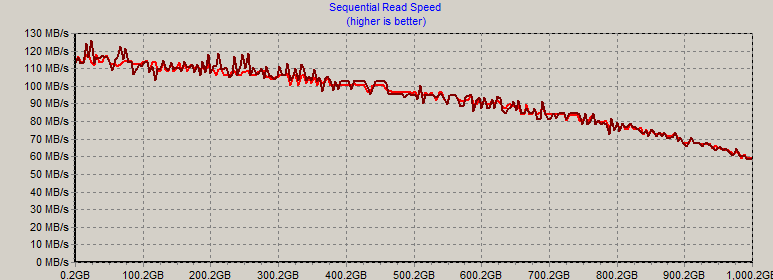USB 2.0, FireWire, Or eSATA: Which Interface Should You Use?
Test Setup And Throughput Diagrams
| System Hardware | |
|---|---|
| Hardware | Details |
| CPU | Intel Core i7-920 (45nm, 2.66 GHz, 8MB L2 Cache) |
| Motherboard (Socket 1366) | Supermicro X8SAX Revision: 1.1, Chipset: Intel X58 + ICH10R, BIOS: 1.0B |
| RAM | 3 x 1GB DDR3-1333 Corsair CM3X1024-1333C9DHX |
| HDD | Seagate NL35 400GB ST3400832NS, 7,200 RPM, SATA/150, 8MB Cache |
| Graphics | ATI Radeon HD 3450 256MB DDR2 Memory |
| Power Supply | OCZ EliteXstream 800W OCZ800EXS-EU |
| Benchmarks | |
| Performance Measurements | HD Tach 3.01 |
| System Software & Drivers | |
| Driver | Details |
| Operating System | Windows Vista Ultimate SP1 |
| Intel Chipset | Chipset Installation Utility 9.1.0.1007 |
| AMD Graphics | Radeon 8.12 |
| Intel Matrix Storage | 8.7.0.1007 |
Hitachi
SimpleDrive III: 2TB (USB 2.0)
The USB 2.0 throughput diagram is typical--you get a constant throughput of more than 30 MB/s.
G-Technology G-Drive 1TB (FireWire 400)
FireWire 400 on the G-Technology hard drive is faster, as it delivers roughly 40 MB/s read speeds and a bit more than 30 MB/s write speeds.
G-Technology G-Drive 1TB (FireWire 800)
FireWire 800 is even better with 80 MB/s read speeds and a bit more than 60 MB/s write speeds. The diagram also clearly shows that the drive’s performance decreases a bit as you get closer to the end of the medium.
G-Technology G-Drive 1 TB (eSATA)
Get Tom's Hardware's best news and in-depth reviews, straight to your inbox.
The eSATA throughput diagram underscores how this interface is the only one that doesn’t pose a bottleneck to the hard drive. All other diagrams mainly display a horizontal line, while the eSATA diagram reveals the true performance of the hard drive that G-Technology uses.
G-Technology G-Drive 1 TB (USB 2.0)
The G-Drive also supports USB 2.0, and it’s slightly faster than the SimpleDrive III.
Current page: Test Setup And Throughput Diagrams
Prev Page eSATA/FireWire/USB 2.0: G-Technology G-Drive 1TB Next Page Benchmark Results: Access Time And Throughput



